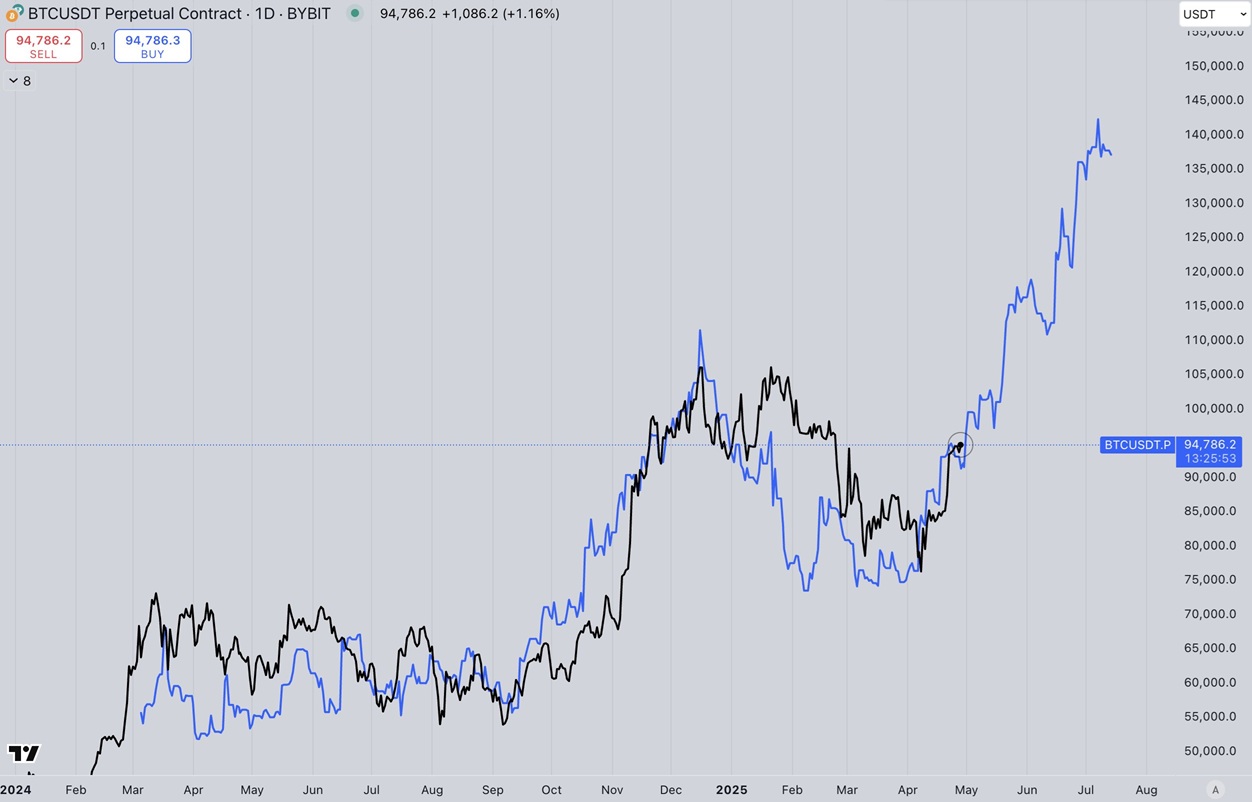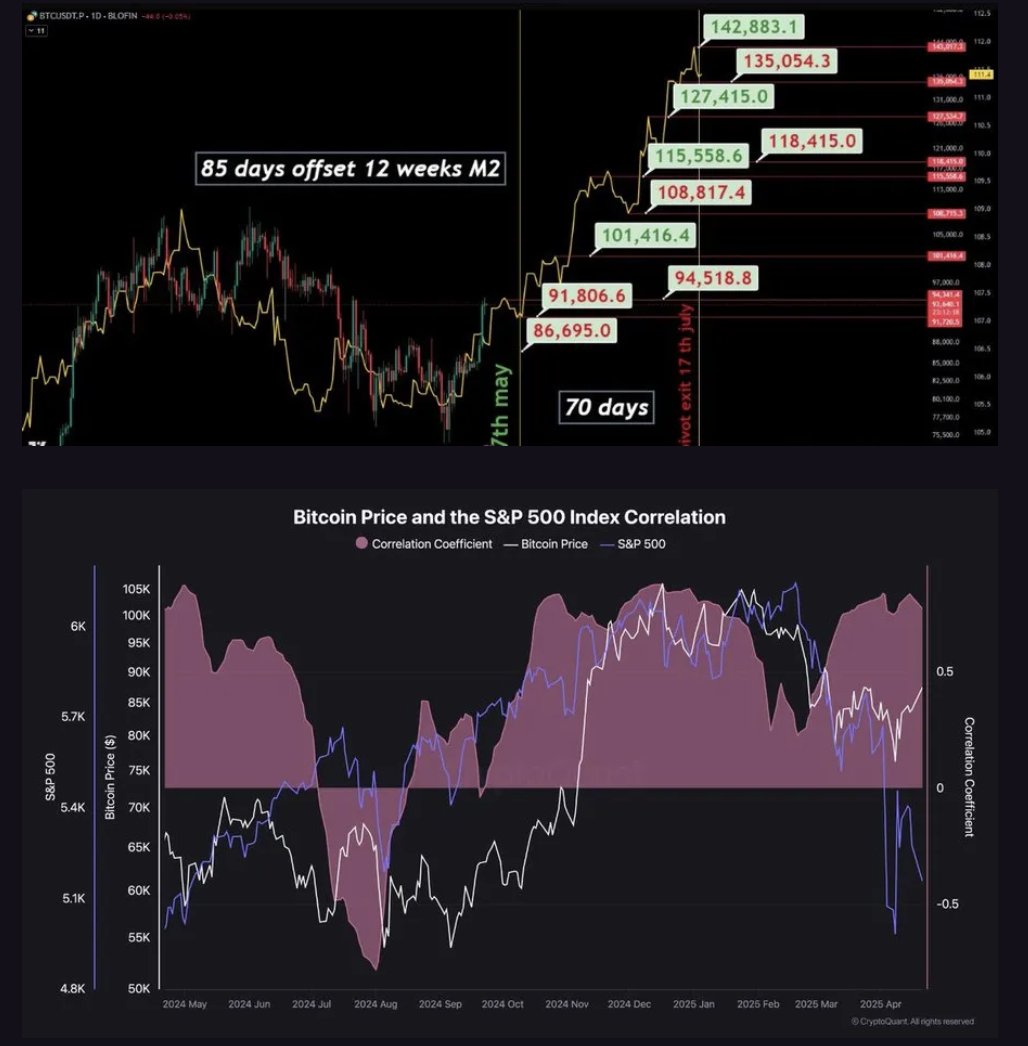The old financial market adage “Sell in May and go away” has long been a guiding principle for investors looking to avoid potential summer volatility. However, some analysis suggests that this adage may not hold true for Bitcoin in the coming month.
Several arguments indicate significant differences in the market landscape for 2025. These factors suggest that May could see price increases instead of decreases.
4 Reasons Why Selling in May Could Be a Big Mistake in 2025
Many analysts recently emphasized a key reason: Bitcoin now aligns closely with the global M2 money supply.
M2 measures the amount of money circulating in the economy. It includes cash, savings deposits, and highly liquid assets. Historically, M2 has shown a strong correlation with Bitcoin prices. When central banks such as the FED, ECB, or PBoC increase the money supply, Bitcoin tends to rise.

Kaduna shared a chart that confirms this trend will continue in 2025. According to this pattern, May could be a breakout month for Bitcoin. While not all analysts agree with this view, investors are increasingly accepting it, creating positive sentiment in the market.
“Sell in May and go away would be a huge mistake,” Kaduna emphasized.
Second, historical data backs up Kaduna’s outlook. According to Coinglass, Bitcoin has delivered an average return of over 7.9% in May over the past 12 years. Although financial markets often experience turbulence in summer, Bitcoin doesn’t always follow that pattern.

Instead, May often shows positive performance. It’s not the strongest month, but it outperforms June and September. One investor on X observed that since 2010, Bitcoin has seen nine green Mays and six red ones.
The original proverb comes from the stock market, where historical data shows it works better for equities, not necessarily for crypto.
Another major point supporting Kaduna’s thesis is the surge in inflows into Bitcoin ETFs. BeInCrypto recently reported that spot Bitcoin ETFs attracted fresh investor demand on Monday. They recorded net inflows of $591.29 million and extended their winning streak to seven consecutive days.
Notably, BlackRock’s iShares Bitcoin Trust (IBIT) led the way. It recorded the largest inflow among its peers, attracting $970.93 million in one day, bringing its total accumulated net inflows to $42.17 billion.

This increase reflects growing investor confidence and long-term optimism for Bitcoin in 2025. That sentiment may well carry into May, giving further upward momentum to Bitcoin’s price.
Finally, Bitcoin is clearly decoupling from the S&P 500, which historically has signaled large price surges.
Investor arndxt noted this divergence. BeInCrypto also reported a growing disconnect between Bitcoin and the NASDAQ index. Bullish analysts interpret this as a sign that Bitcoin behaves more like an independent asset, less tied to traditional markets.
“The old ‘Sell in May and go away’ mantra doesn’t apply the same way for crypto, liquidity pressures are easing, and this time, May could mark the beginning of an acceleration, not a pause.” – arndxt predicted.

Strong support from M2 correlation, positive May performance in Bitcoin’s history, large ETF inflows, and decoupling from traditional indexes suggest that selling Bitcoin in May 2025 could be a serious mistake.
However, investors should remain cautious. Key data from the Fed, such as CPI, interest rates, and updates on trade tensions, could still introduce uncertainty into May’s outlook.
The post Why “Sell in May” Could Be a Huge Mistake in 2025, Analyst Reveals appeared first on BeInCrypto.







